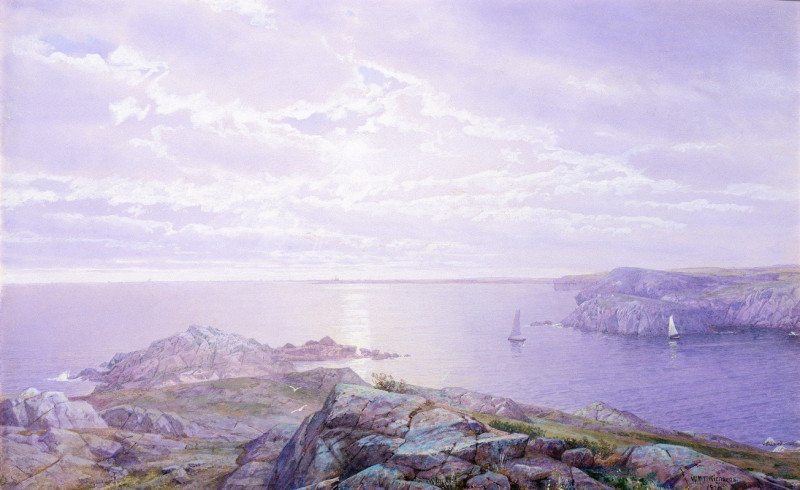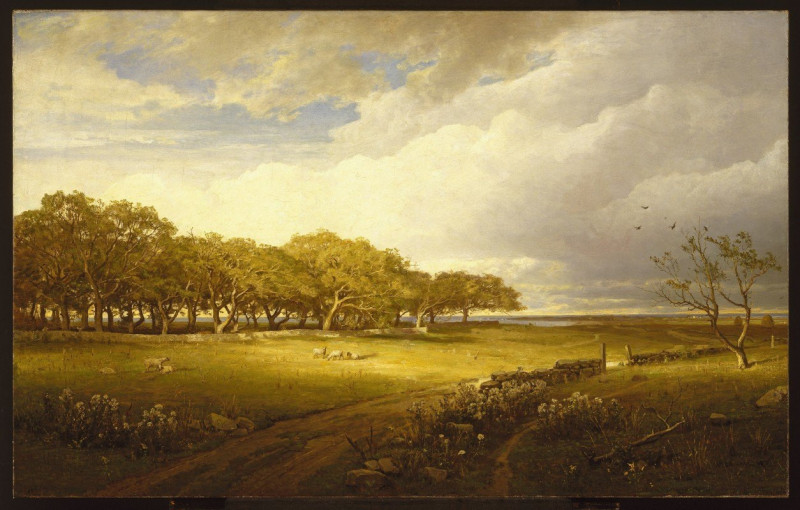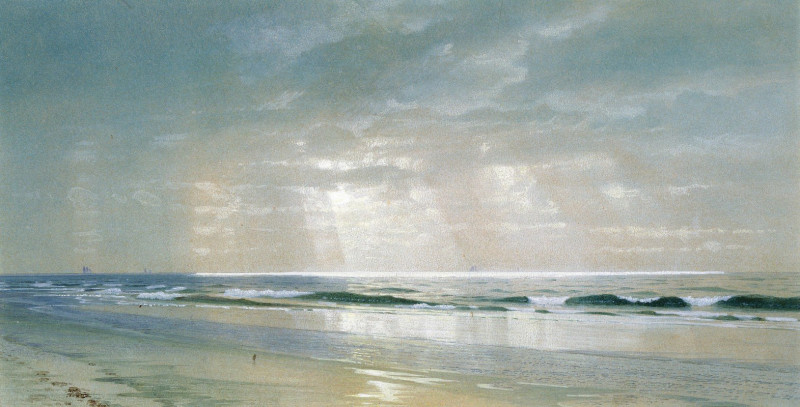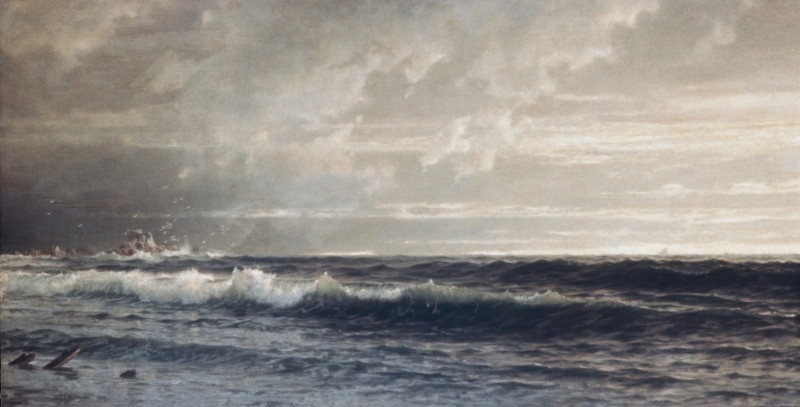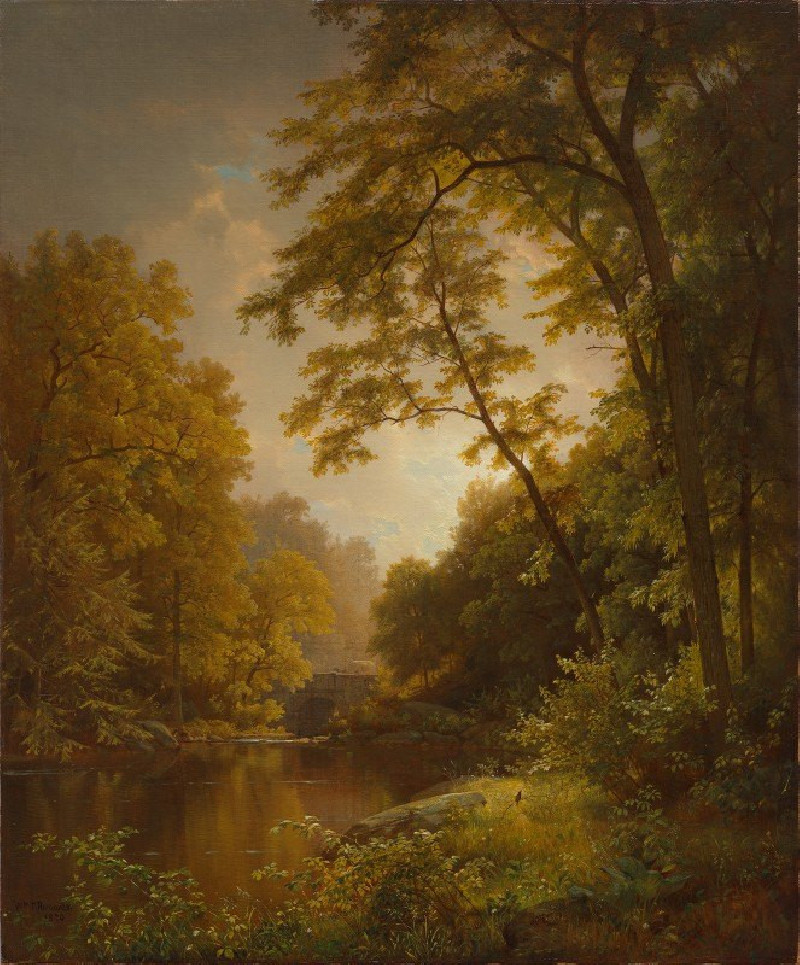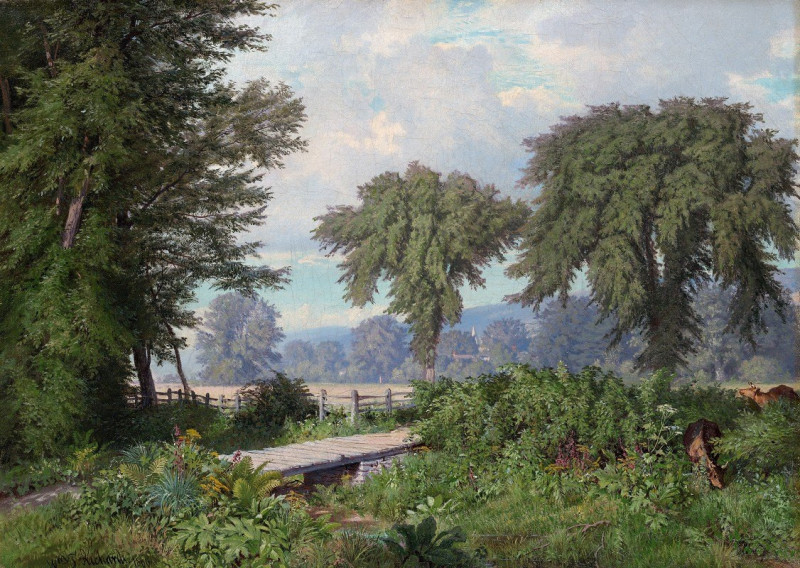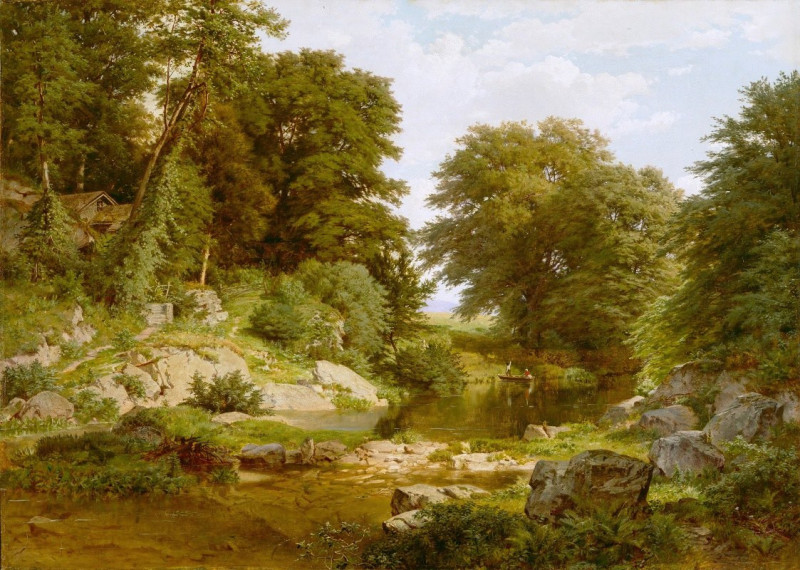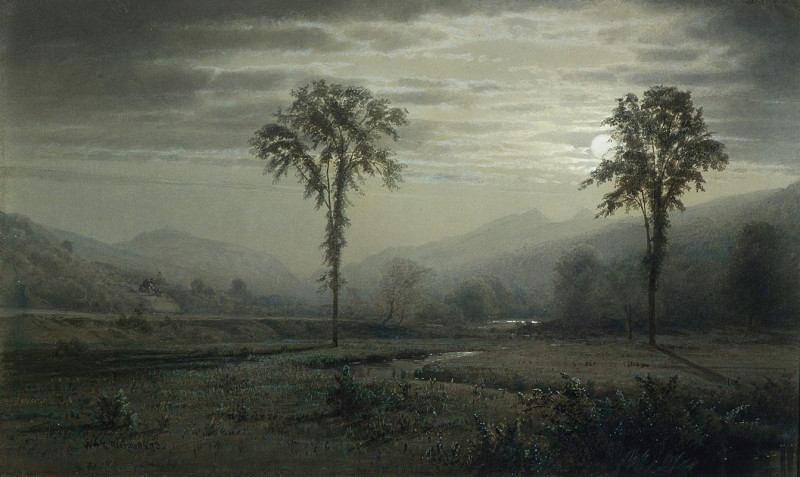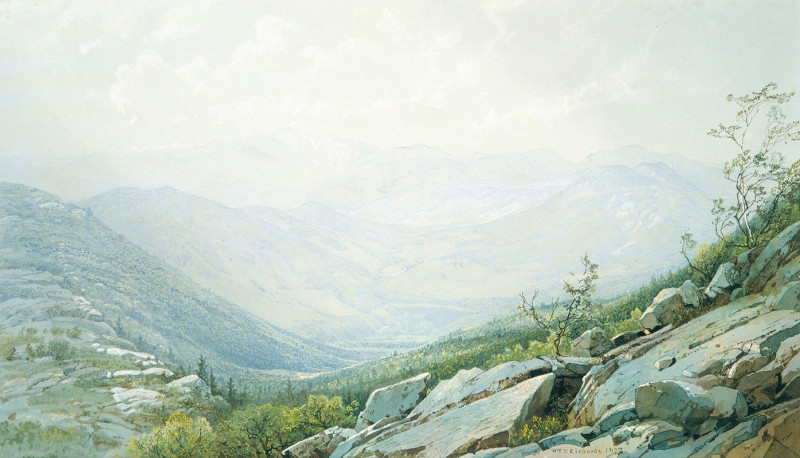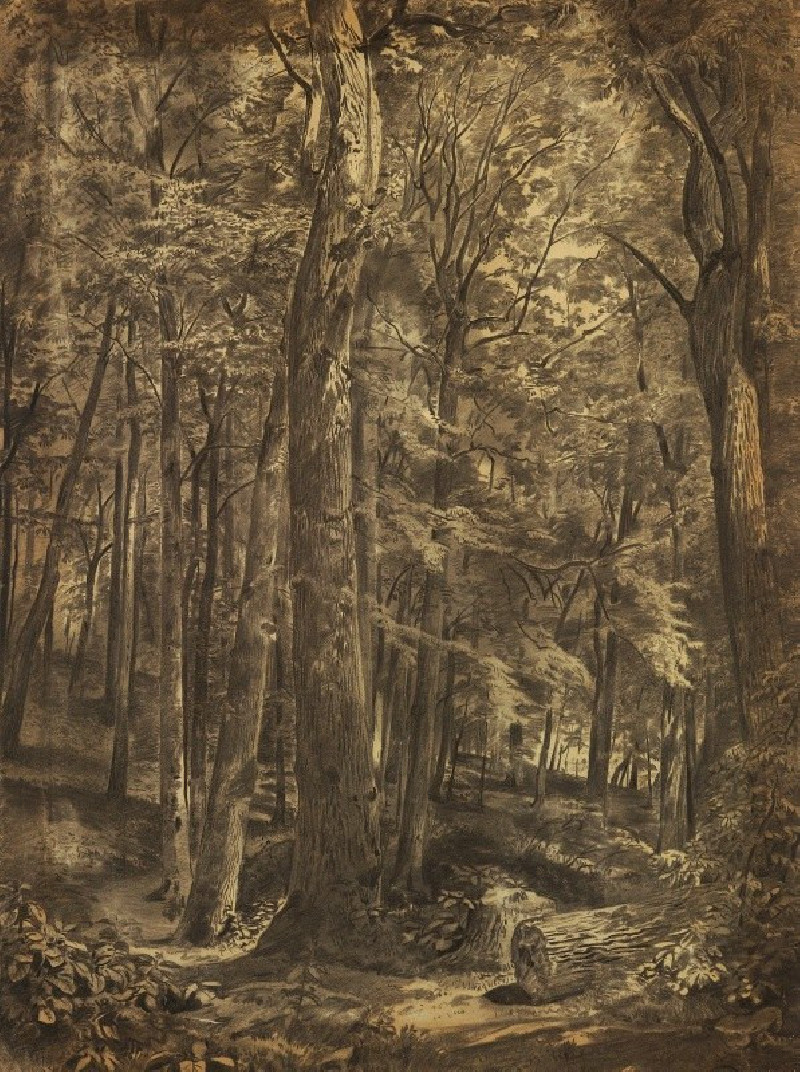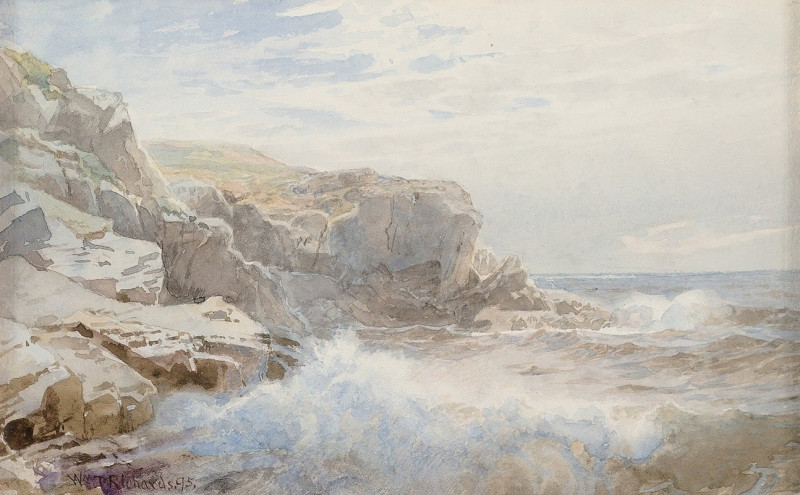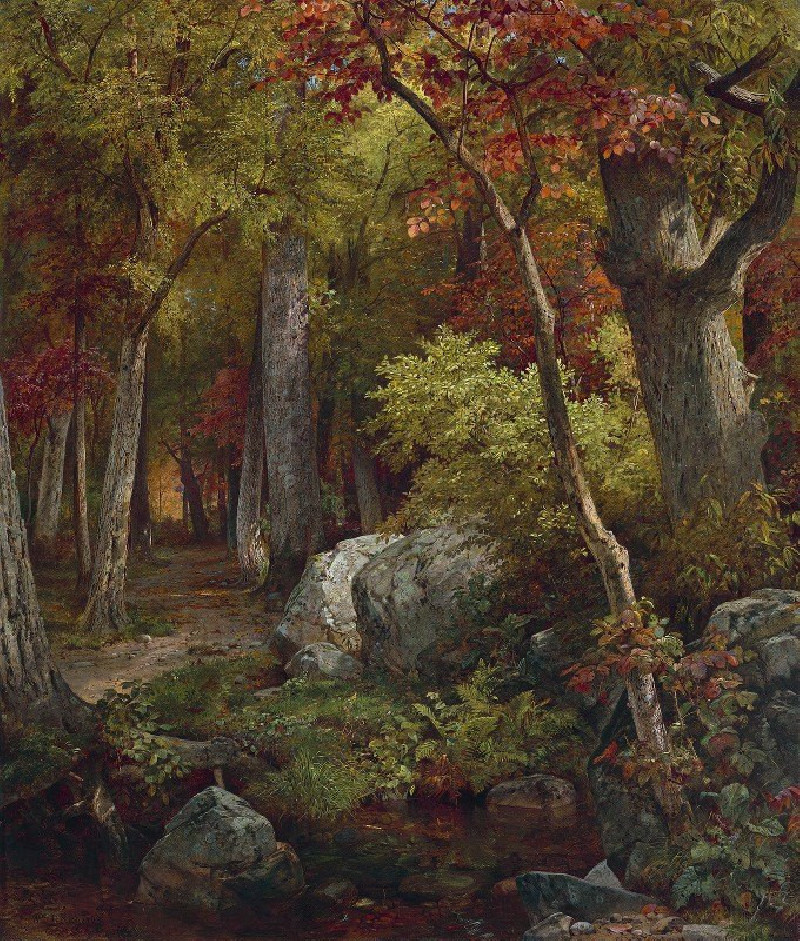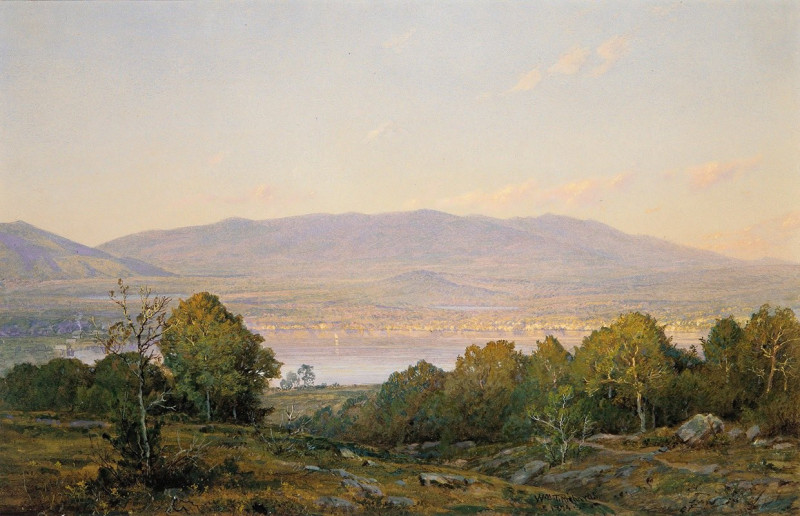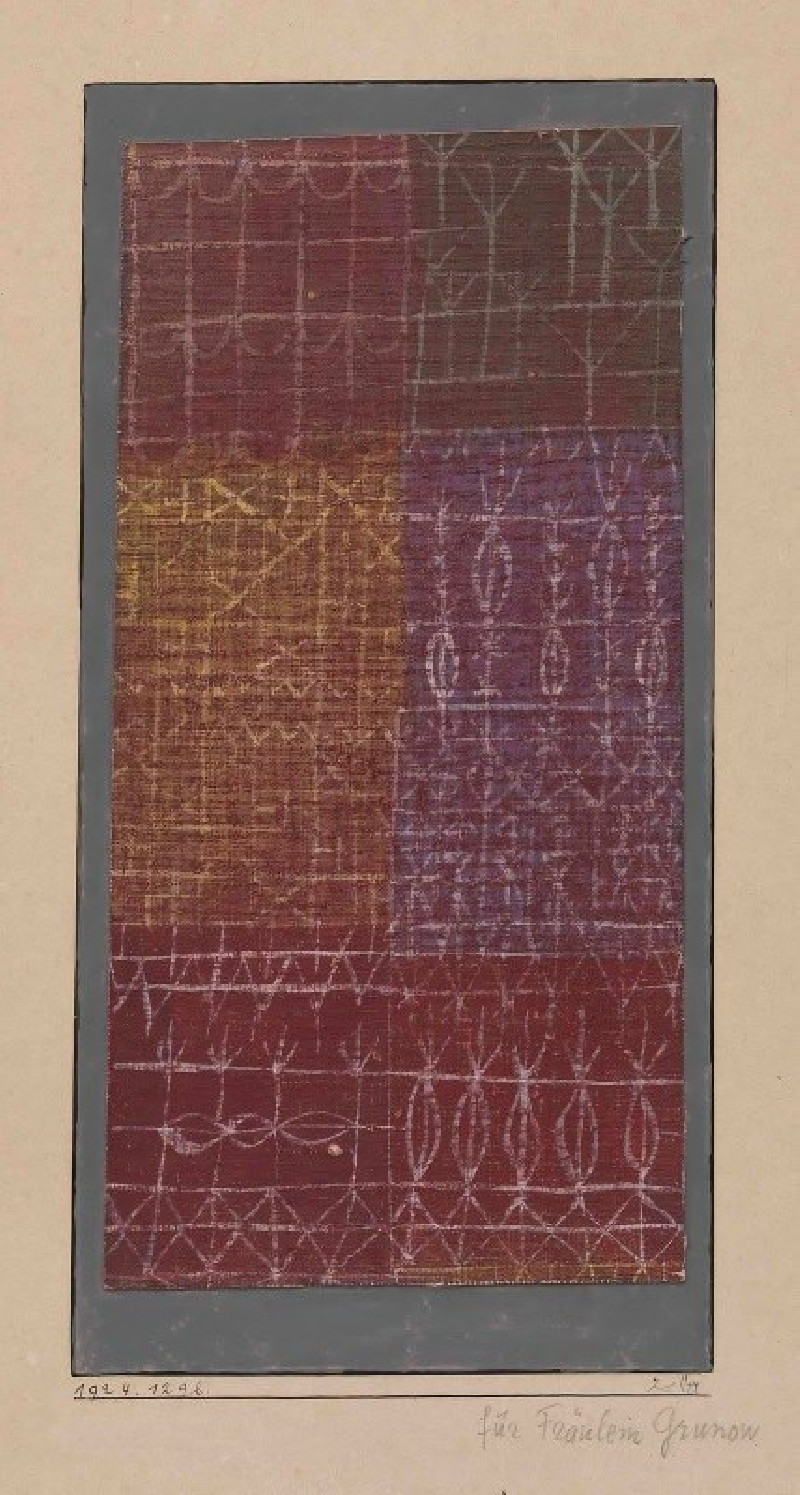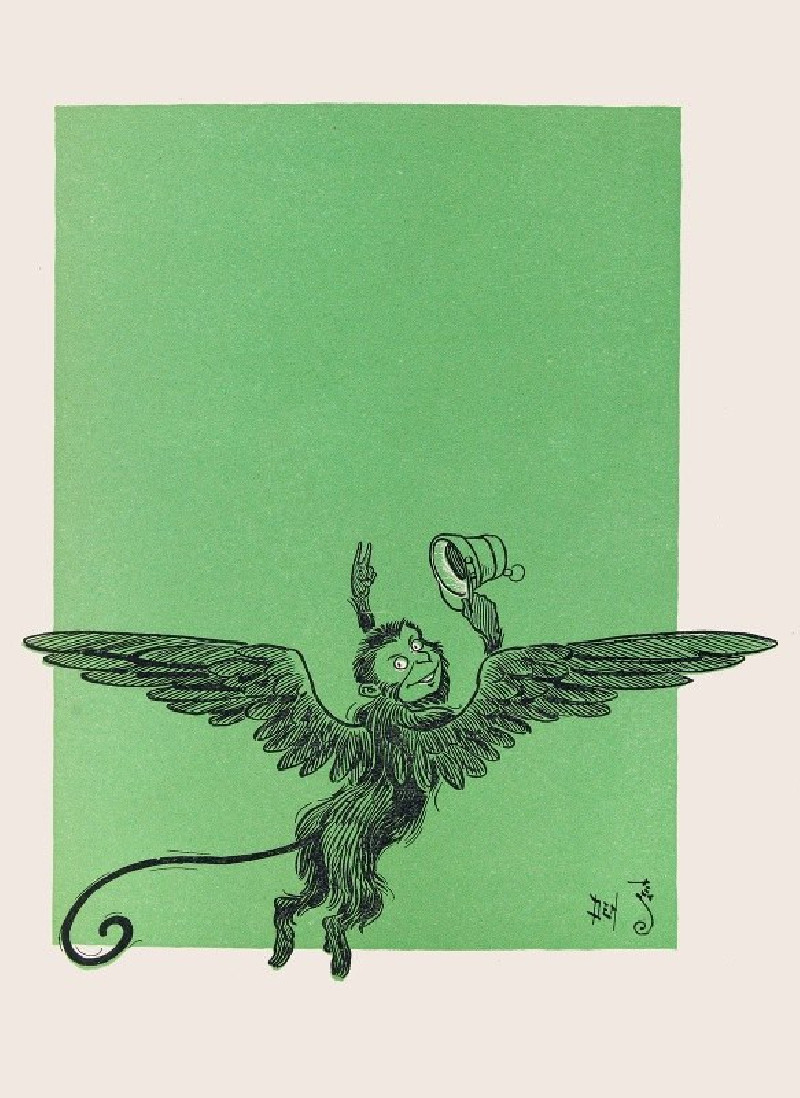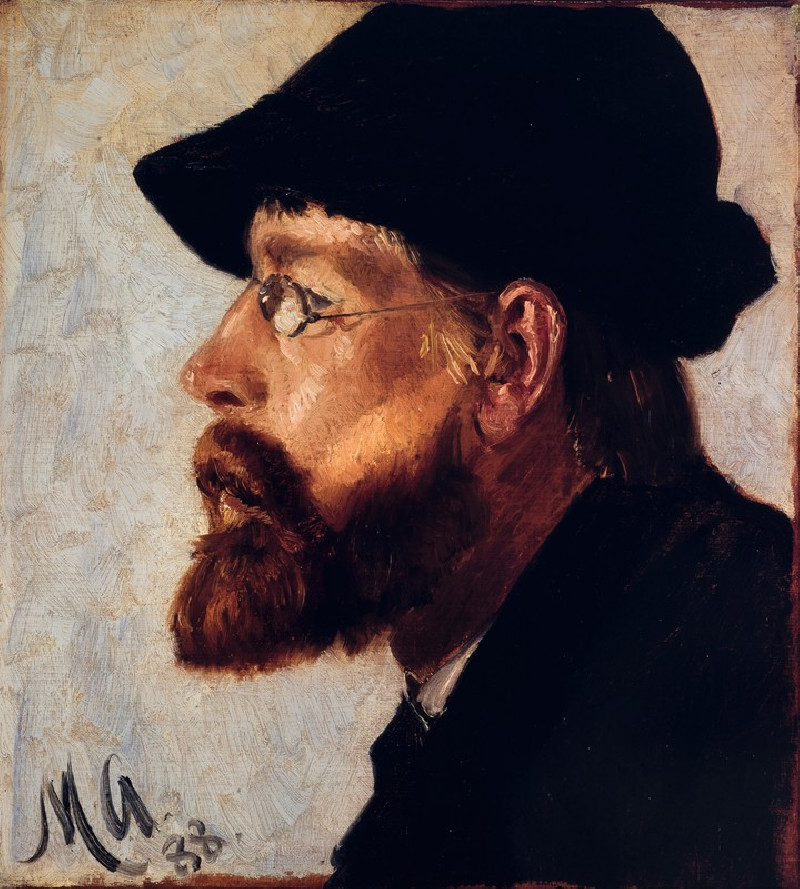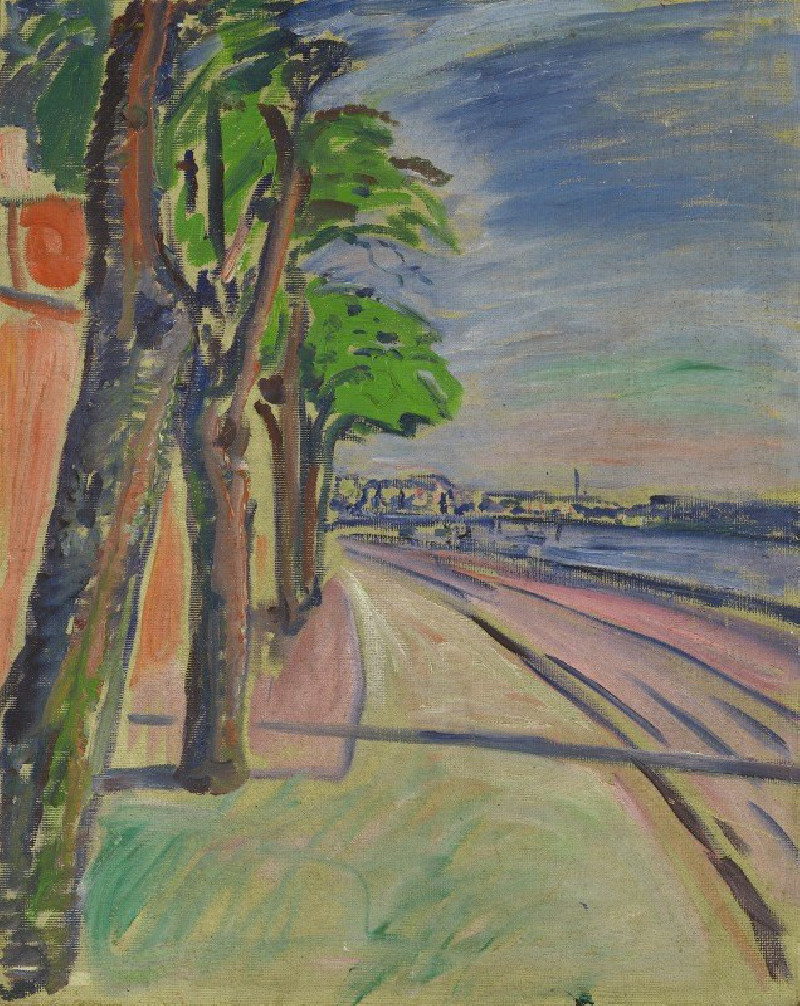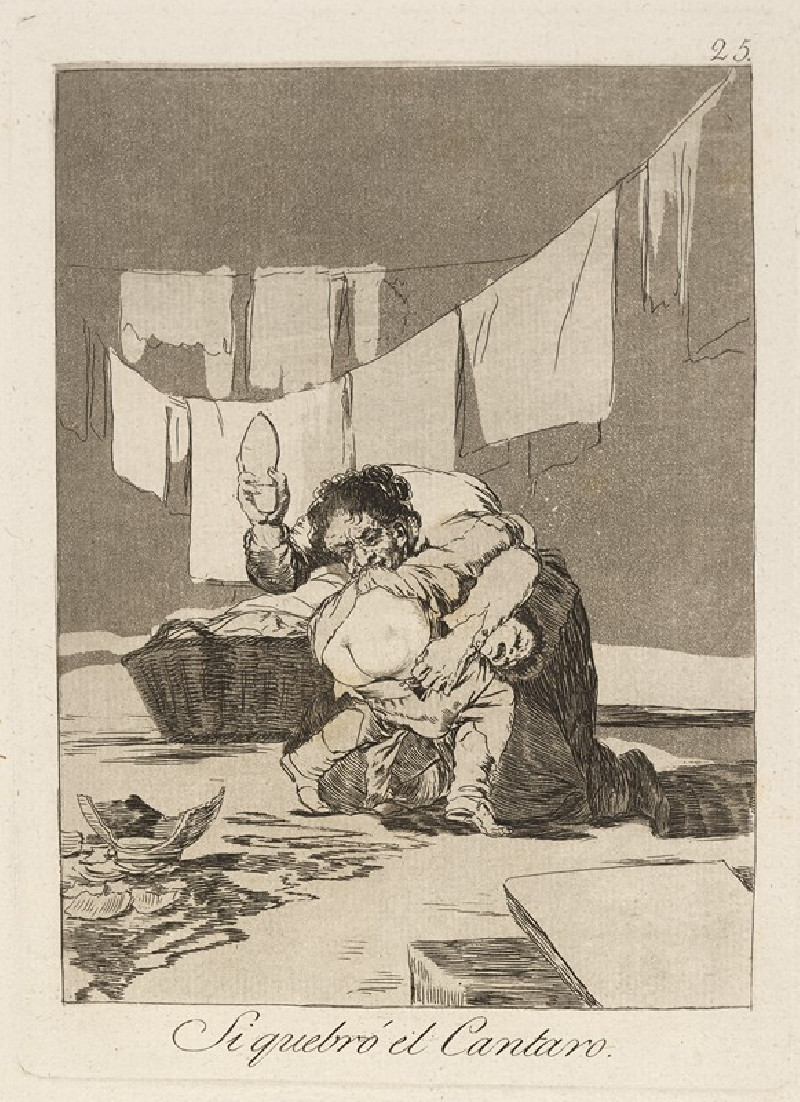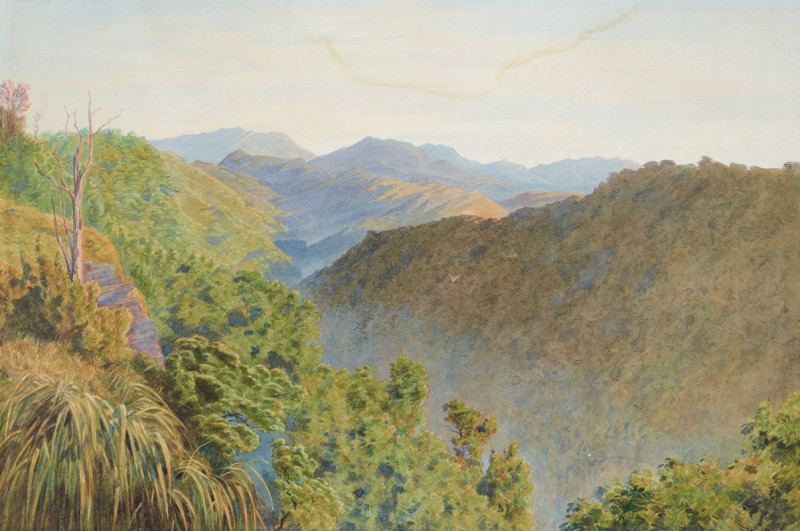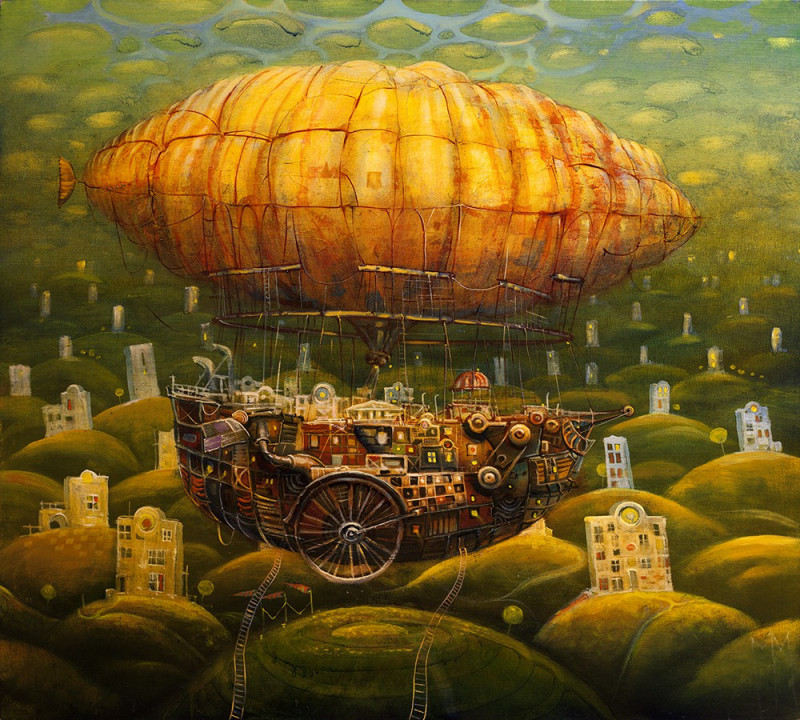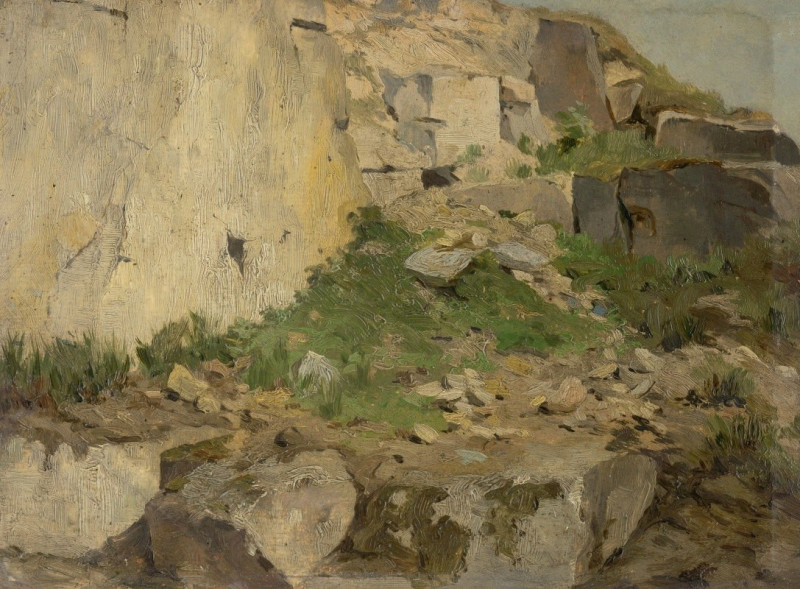From Paradise to Purgatory, Newport (1878)
Technique: Giclée quality print
Recommended by our customers
More about this artwork
In this captivating landscape from 1878, titled "From Paradise to Purgatory, Newport," William Trost Richards masterfully captures a serene yet rugged terrain that juxtaposes the roughness of rocky cliffs with the tranquil expanse of a distant view. Richards, celebrated for his fine attention to detail and his profound reverence for nature, presents a scene that invites the viewer to traverse from the textured foreground of craggy, jutting rocks strewn with hardy shrubs and patches of grass, through the lush greenery cloaking the rolling hills, towards the serene plains that stretch out to the sea-swept horizon.The painting vividly contrasts the harsh, unyielding features of the rocky outcrops against the soft, expansive sky. This tension likely mirrors the metaphorical journey from 'paradise' to 'purgatory,' suggesting a transition through states of being or consciousness, underscored by the artist’s sophisticated use of light and shadow. The way light plays across various surfaces, from the sunlit rocks to the shaded greens, highlights Richards' skill in portraying naturalistic and atmospheric effects.William Trost Richards' work not only reflects his technical skill but also his emotional and intellectual engagement with the landscape, rendering not merely a physical place but a poignant, contemplative experience.
Delivery
Returns
William Trost Richards was an American landscape artist. He was associated with both the Hudson River School and the American Pre-Raphaelite movement.
William Trost Richards was born on 14 November 1833 in Philadelphia, Pennsylvania. In 1846 and 1847, he attended the local Central High School. Between 1850 and 1855, he studied part-time with the German artist Paul Weber, while working as designer and illustrator of ornamental metalwork. Richards's first public exhibit was part of an exhibition in New Bedford, Massachusetts, organized by artist Albert Bierstadt in 1858.


